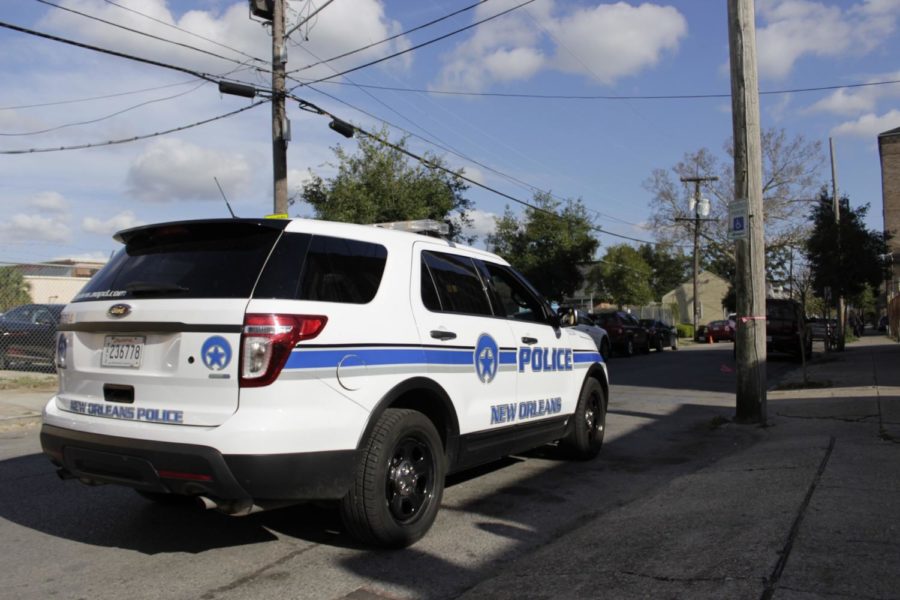New Orleans hits 120th homicide for 46th year in a row
November 3, 2017
The city of New Orleans is on a grim streak. The first of October marked the 46th consecutive year with over 120 homicides in the city. Only two other American cities with populations under a million can claim the same streak: Detroit and Baltimore.
Homicides, however, are just a telling piece of a much bigger problem. For New Orleans, efforts to quell crime seem to be falling short as Uniformed Crime Reporting shows an 11 percent increase to date compared to last year. According to crime analyst Jeff Asher, spikes in car burglaries and shoplifting have largely contributed to the increase.
Asher, a former analyst for the U.S. Department of Defense and the New Orleans Police Department, now runs his own consultant firm. Despite no longer working on the department’s payroll, he still does New Orleans crime data analysis for public awareness.
During a crime forum at Loyola in mid-October, Asher repeatedly mentioned one crucial statistic with a huge impact on the city’s crime problem: a depleted police force.
NOPD went from 1,366 officers in 2006 to only 1,092 as of the end of the third quarter in 2017, according to the department. Police statistics also show from 2006 to 2016, the number of robberies per year has nearly doubled from 761 to 1,445 and the number of assaults per year has increased from 1,245 to 2,093.
During that same time span, burglaries have dropped significantly from 4,087 in 2006 to 2,427 in 2016, but theft numbers have seen an increase. In 2006, just over 5,000 thefts were reported but in 2016 that number had exceeded 10,000.
The sheer amount of crime is not the only problem. According to NOPD data, murder clearance rates are also struggling. In 2010, the murder clearance rate was at 53.1 percent. In 2016, that number fell to 26.3 percent and as of the first quarter of 2017 the number was at 18.3 percent. As of today, NOPD has removed clearance rate statistics from the section of their website intended to provide transparency on crime statistics.
Asher said the decline in officers is directly correlated to the drop in clearance rates.
“It’s not just that NOPD lost these officers, it’s that they lost these capabilities. The homicide unit went from 43 officers to 29 officers, so that’s a 35 percent reduction. 35 percent reduction in homicide detectives means fewer cases solved which means more retribution which continues this cycle,” he said.
While shooting incidents are up over 10 percent on the year, murders are down 6.2 percent. New Orleans is on pace this year for the highest number of shooting victims in the past seven years, having reached 500 victims as of October 19. In previous years, the city reached that number in mid-to-late November or not at all.
All of these numbers are significantly down from when the city murder rate skyrocketed in 2006, but Asher says comparing data now to then is misguided due to the shift in population caused by Hurricane Katrina.
“So if you start in 2006, New Orleans’ murder rate was largely driven by the fact that there were 200,000 people here, so the city shrunk by 260,000 people almost overnight, and so the city’s murder rates in 2006-07 and 1993-94 were arguably the highest murder rates ever recorded for an American city. So if you start in 2006 and compare it to today, things look good but if you were to sort of assess the progress of the Saints, you wouldn’t start with 1981 when they went 1-15, you would be more interested in how they are doing relative to the year they won the Super Bowl or years where you would sort of see success, which not to sort of belittle the concept of murder or the seriousness of the subject but from a pure data analysis perspective, starting in 2006 is sort of misguided or not necessarily an honest approach to the problem,” Asher said.
When it comes to finding a solution, many believe the city and state are failing. Melissa Sawyer, co-founder of the Youth Empowerment Project, is concerned the city is focused too strongly on addressing the issue from a law enforcement position rather than a social position. She points to children as who should be the focus of efforts to solve the growing problem, urging for a social reform platform which can target at-risk children before the cycle of community violence engulfs them.
“That’s why we need programs like YEP. We need to invest in interventions because law enforcement alone, and this is a cliché, we’re not going to incarcerate our way out of this and it’s really going to take an investment in our children and our community matched with the investment in the well-trained, culturally-competent supporting law enforcement strategies,” Sawyer said.
Louisiana is the most incarcerated state in the United States with 776 per 100,000 people in state prisons, followed by Oklahoma at 715. According to the Youth Empowerment Project, over 94,000 children in Louisiana have a parent that has been incarcerated.
Both Asher and Sawyer agree that if students want to become involved in efforts to reduce crime throughout the city, the best way is to seek out organizations like the Youth Empowerment Project and volunteer to help.
“I would just encourage you to reach out and to become civically engaged, and again you don’t have to save the world. If it’s only one child, reading with one kid for one hour a month, if it is donating a little of what you have to make someone’s holiday a little bit nicer then you know that you’re really doing more than your share. And I think that that is what this is going to take is everyone just saying ‘Hey I want to do my part to make this city and to make this world a little bit better for those who don’t have as much as I have,'” Sawyer said.








